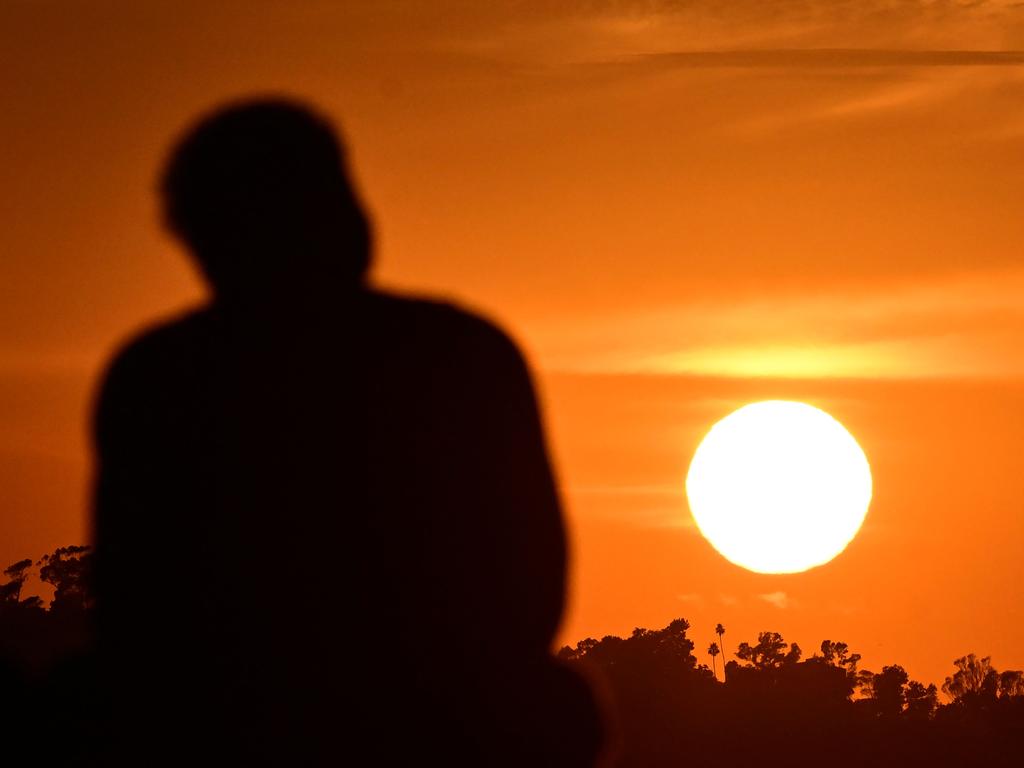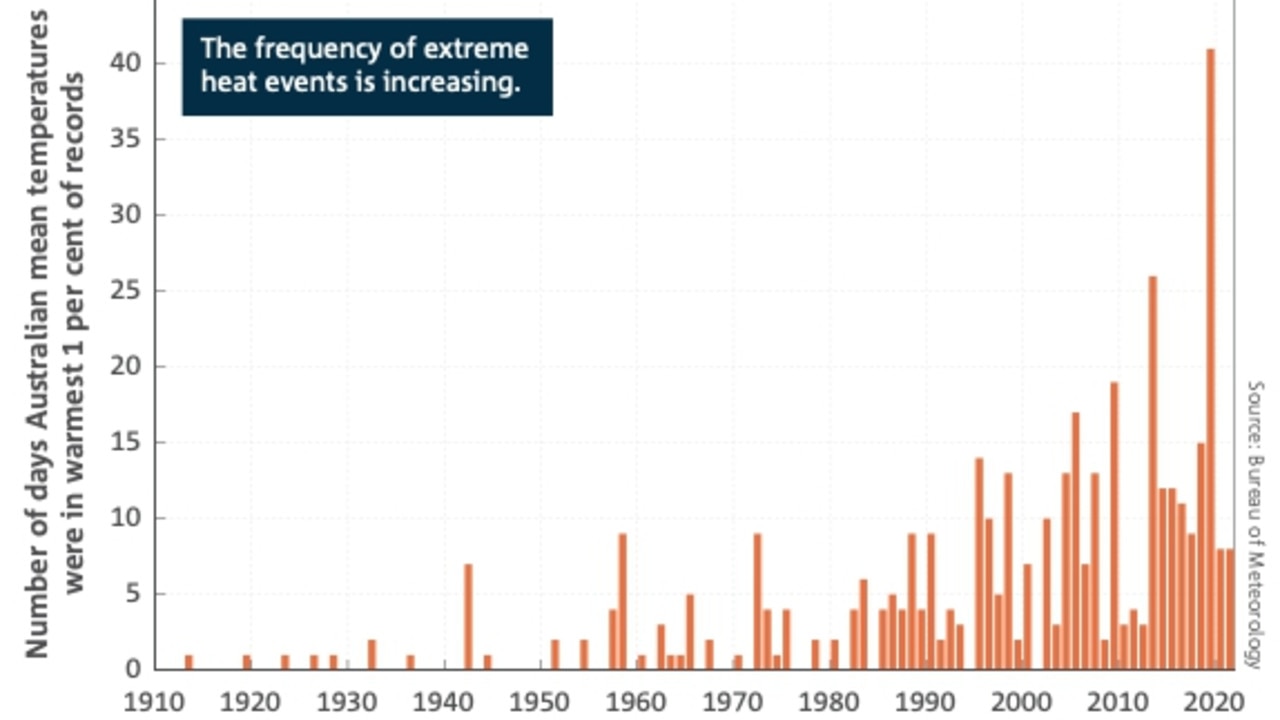Australia’s ‘silent killer’ set to claim thousands of lives - with Western Sydney at risk
It’s been dubbed the nation’s ‘silent killer’ because it takes hundreds of lives each year but isn’t discussed – but soon, experts warn it’ll be inescapable.

The number of people who die from heat-related deaths, dubbed society’s “silent killer”, is projected to surge over coming decades, with millions living in so-called ‘heat islands’ like Western Sydney.
Experts warn complacency and inaction are dooming millions of people to dire fates because extreme heat still isn’t taken seriously.
On February 6 in 2009, some 400 fires raged in Victoria in a devastating event that would come to be known as Black Saturday, killing 173 people and injuring 400 more.
There was a Royal Commission, legislative change, millions of dollars raised for victims and a permanent scar left on the psyches of communities impacted.
However, the extreme summer heat surrounding those haunting bushfires claimed the lives of 374 people, which is a death toll rarely acknowledged.
“It is common knowledge that heat is the silent killer in Australia that costs more lives than those lost in all other natural disasters combined,” Associate Professor Sebastian Pfautsch from Western Sydney University said.

It’s estimated extreme heat is responsible for about 1100 deaths around the country each year. A new report warns that figure could get much, much worse.
The latest Lancet Countdown on Health and Climate Change has been released today, an international research collaboration drawing on the expertise of 114 scientists and health experts from 52 organisations, marks the most comprehensive assessment yet.
“Climate change is increasingly impacting the health and survival of people worldwide, and projections show these risks could worsen steeply with further inaction,” it reads.
“If global mean temperature continues to rise to just under 2C, annual heat-related deaths are projected to increase by 370 per cent by mid-century, assuming no substantial progress on adaptation.”

The world this year has witnessed the highest global temperatures in more than 100,000 years and heat records on all continents were broken in 2022.
The Lancet report found 60 per cent of health-threatening high temperature days in 2020 were made twice as likely to occur by climate change.
“Adults older than 65 years and infants younger than 1 year, for whom extreme heat can be particularly life-threatening, are now exposed to twice as many heatwave days as they would have experienced in 1986–2005,” the report states.
More Aussies to swelter
Since records began, Australia has warmed by about 1.4C and continues to get hotter – but that heat isn’t felt equally.
Some parts of the country see wildly higher temperatures, especially during heatwaves, in areas known as ‘urban heat sinks’ or ‘urban heat islands’.
Western Sydney is one such location, where the mercury can soar up to 10C higher during heatwaves, and where two 50C-plus days have been recorded.

“All credible projections point towards more heat and in the recent past, Western Sydney was already twice the hottest place on the planet,” Associate Professor Pfautsch said.
It’s partly the geography, being inland and far from cooling coastal breezes, but also the design of modern suburbs that are heavy on concrete, light on greenery, and lacking in tree coverage.
Add into the mix the popularity of dark-coloured roof materials – which can be 40C hotter on the surface than the surrounding air temperature – and the impacts are stifling.

“Under a high emissions scenario, Western Sydney could experience up to 46 days of extreme heat annually by 2090,” recent research by the Australia Institute found.
“This is a five-fold increase from the historical average of just under nine days of extreme heat per annum.”
But impacts will be felt much sooner, with the number of extreme heat days projected to reach 16 per annum by 2030, almost double the current rate, and up to 23 days by 2050, according to the modelling.
Higher temperatures significantly impact the body’s ability to cool down, which can cause dehydration and heatstroke.
Vulnerable people, including those with pre-existing health conditions and the elderly, are at risk of death.
“When hot days are combined with hot nights, the body has no opportunity to cool down and recover,” the Australia Institute research noted.

It’s not just Western Sydney where urban heat islands or heat sinks can be found.
Melbourne’s dense and rapidly developed western suburbs are also prone to hotter comparable days and more frequent extreme heat events.
Milton in Brisbane’s inner-city, the site of rapid development, has also been identified by researchers, as has Adelaide’s west.
Dire warning the government ‘hid’
Last year, the Commonwealth released a damning report commissioned by Scott Morrison’s government, which it said was hidden away from the public.
The State of the Environment research revealed how a combination of factors is damaging the country’s natural world and wildlife populations.
It also outlined the worsening conditions within urban landscapes, Environment Minister Tanya Plibersek said at the time.
“The report is a shocking document,” Ms Plibersek said.
“It tells a story of crisis and decline in Australia’s environment and a decade of government inaction and wilful ignorance.”

The findings compile scientific assessments over a five-year period by 30 leading experts and show most of Australia’s eight major cities are growing faster than many other developed cities globally.
The result of that is greater urban heat, congestion, pollution and waste and more pressure on “increasingly scarce” resources.
“These impacts expand to the natural environment surrounding our urban areas and the biodiversity [and] green and blue spaces within them,” the summary findings reveal.
As an example, it’s revealed Sydney has lost 70 per cent of its native vegetation cover due to development.

Dan Metcalfe, director of the Oceans and Atmosphere team at the CSIRO and co-lead author of the report’s extreme events chapter, said the impact of severe weather are being felt “widely across the built and natural environment”.
“The State of the Environment report found the intensity, frequency, and distribution of extreme weather-related events are changing,” Dr Metcalfe said.
“Impacts of extreme events have been exacerbated by habitat fragmentation, land management practices, and invasive species, and extreme events are demonstrably impacting our environment, ecosystems, society, and our wellbeing.”
Broader impacts than heat death
As well as direct health risks, the Lancet research found climate change is “damaging the natural and human systems on which people rely for good health”.
“The global land area affected by extreme drought increased from 18 per cent in 1951–60 to 47 per cent in 2013–22, jeopardising water security, sanitation, and food production.
“A higher frequency of heatwaves and droughts in 2021 was associated with 127 million more people experiencing moderate or severe food insecurity compared with 1981–2010, putting millions of people at risk of malnutrition and potentially irreversible health effects.
“The changing climatic conditions are also putting more populations at risk of life-threatening infectious diseases, such as dengue, malaria, vibriosis, and West Nile virus.
“Compounding these direct health impacts, the economic losses associated with global heating increasingly harm livelihoods, limit resilience, and restrict the funds available to tackle climate change. Economic losses from extreme weather events increased by 23 per cent between 2010–14 and 2018–22, amounting to US$264 billion (AU$406 billion) in 2022 alone.”



